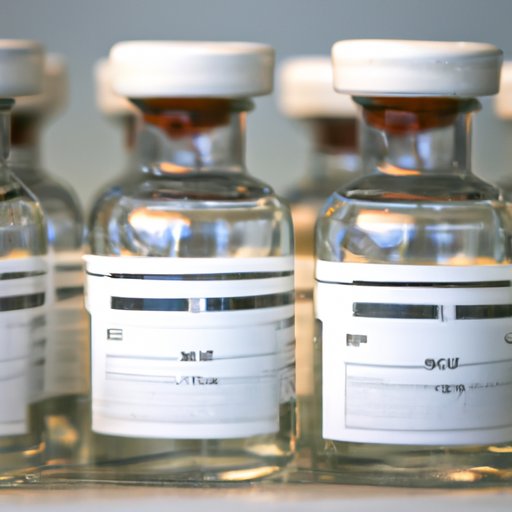Introduction
Have you ever tried to convert milliliters to grams or vice versa and been left feeling confused? The truth is, understanding the relationship between these two measurements can be a challenge. In this article, we will provide a comprehensive guide to help you understand how many grams is a milliliter. We will cover everything from the basics of milliliters and grams to tips and tricks for making quick conversions, as well as the science behind these everyday measurements.
Understanding Milliliters and Grams: A Comprehensive Guide
Milliliters and grams are both units of measurement that are used to measure different quantities. Milliliters are used to measure volume, while grams are used to measure weight or mass. The relationship between the two is affected by the density of the substance being measured. This means that the same volume of two different substances can have vastly different weights.
For example, if you have 100 milliliters of water, it will weigh approximately 100 grams. However, if you have 100 milliliters of oil, it will weigh approximately 87 grams, as oil is less dense than water. Understanding the density of the substance being measured is an important factor in converting milliliters to grams.
To determine how many grams is a milliliter, you need to know the density of the substance being measured, as well as its volume. To calculate the weight in grams, you simply multiply the volume in milliliters by the density of the substance in grams per milliliter. For example, if you have 50 milliliters of a substance with a density of 1.2 grams per milliliter, you would multiply 50 by 1.2 to get a weight of 60 grams.
Milliliters vs. Grams: Which One Should You Use?
Both milliliters and grams have their advantages and disadvantages, and the choice of which to use depends on the specific task at hand. In cooking, for example, milliliters are often used to measure liquid ingredients, while grams are used to measure dry ingredients. In scientific experiments, grams may be used more often, as they provide a more accurate measurement of mass.
When converting measurements, it’s important to use the correct measurement system to get accurate results. For example, using milliliters to measure weight would not be accurate, as weight is a measurement of mass, not volume.
To determine which measurement method to use, consider the context of the task at hand. If you are cooking with liquid ingredients, milliliters may be the best choice. If you are measuring dry ingredients or need a more precise measurement of mass, grams may be better suited for the task.
Quick and Easy: Converting Milliliters to Grams
Converting milliliters to grams can be a tedious process, but there are some tips and tricks to make it easier. One way to simplify the conversion process is to use a chart or table that lists the density of common substances, or a simplified formula to make quick calculations.
You can also use online conversion tools to quickly and easily convert milliliters to grams. These tools allow you to input the volume and density of a substance and instantly receive the corresponding weight in grams.
Cooking Conversions: How to Convert Milliliters to Grams
Converting milliliters to grams can be a common problem in cooking, as recipes may call for liquid ingredients to be measured in milliliters while dry ingredients are measured in grams. To make conversions easier, it’s important to know the density of the liquid or dry ingredient being measured.
For liquids with a similar density to water, such as milk or juice, one milliliter is equal to approximately one gram. For denser liquids or dry ingredients, such as sugar or flour, the conversion factor may be different. It’s important to consult a conversion chart or online tool to ensure accurate measurements.
The Science Behind Milliliters and Grams
The relationship between milliliters and grams is rooted in physical laws and principles that govern the behavior of matter. The volume of a substance is affected by its density and its mass, or the amount of matter it contains. The mass of a substance, in turn, is affected by both its volume and density.
The concept of density is used to describe the relationship between the mass and volume of a substance. Density is calculated by dividing the mass of a substance by its volume. The units of density are commonly expressed in grams per milliliter or kilograms per cubic meter.
Conclusion
Understanding how many grams is a milliliter is essential for a variety of tasks, from cooking to scientific experiments. By considering the density of the substance being measured and using the appropriate measurement system, you can ensure accurate and precise measurements. Whether you’re converting milliliters to grams for a recipe or taking precise measurements for a research project, the tips and tricks outlined in this article can help make the process easier and more efficient.
